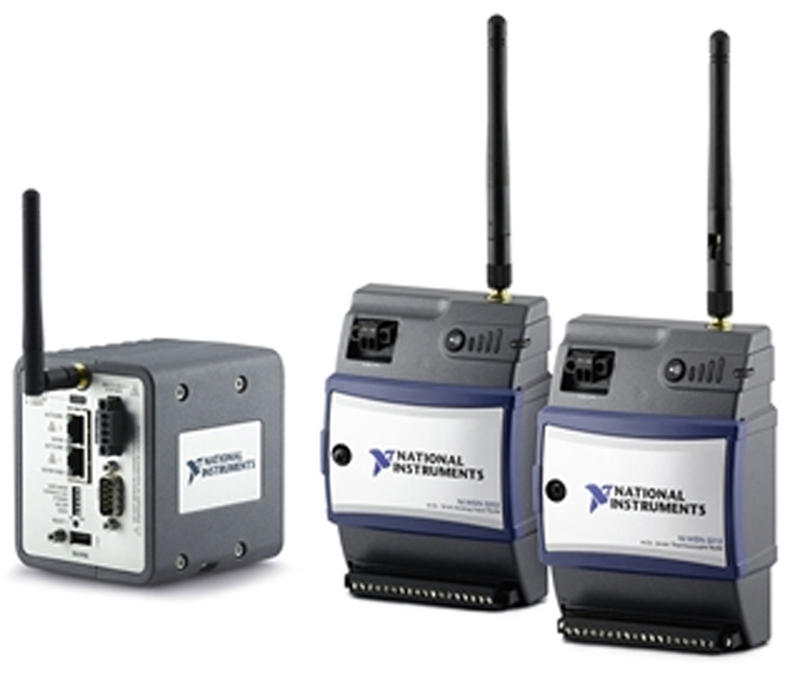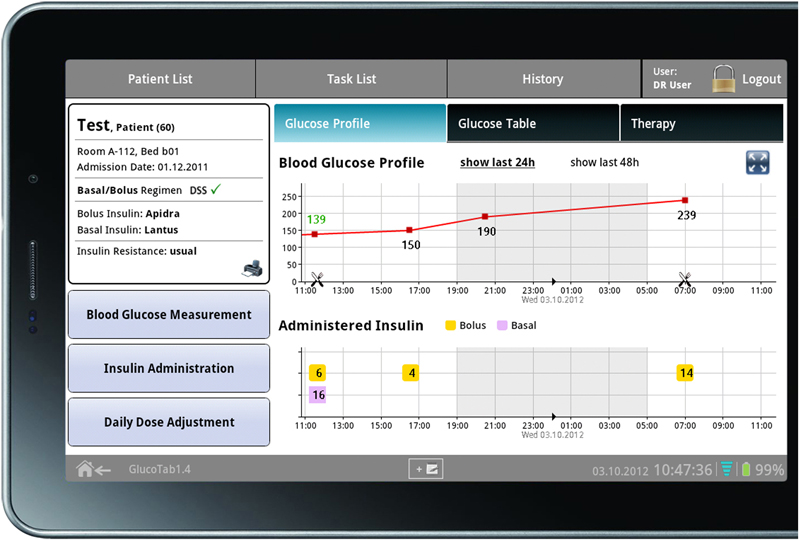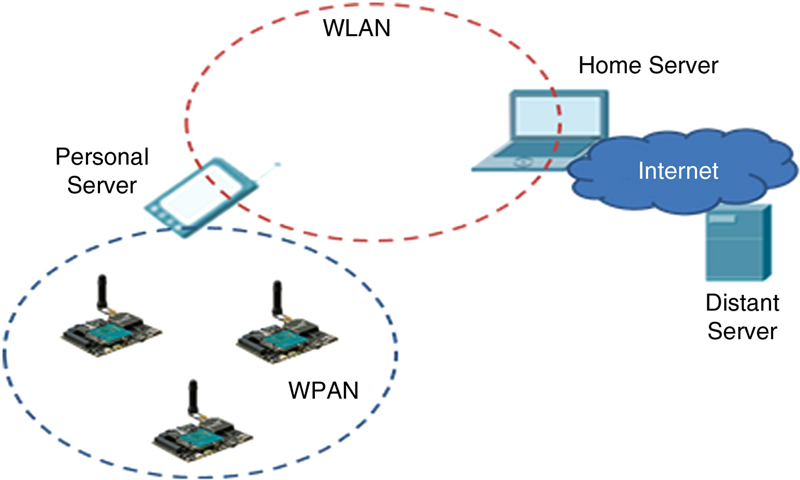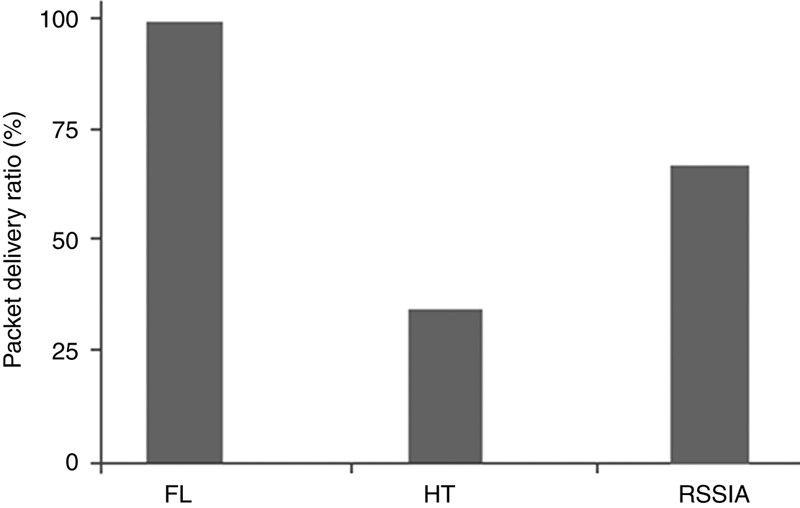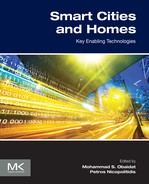References
[1] Obaidat MS, Misra S. Principles of wireless sensor networks. Cambridge, UK: Cambridge University Press; 2014.
[2] Energy consumption by sector. US Energy Information Administration (EIA), March 2015 monthly energy review. March 2015.
[3] Louis J-N, Caló A, Pongrácz E. Smart houses for energy efficiency and carbon dioxide emission reduction. In: The fourth international conference on smart grids, green communications and IT energy-aware technologies (ENERGY 2014), Chamonix, France; April 2014.
[4] Attia II, Ashour H. Energy saving through smart home. Online J Power Energy Eng. 2011;2:223–227.
[5] Barley D, Deru M, Pless S, Torcellini P. Procedure for measuring and reporting commercial building energy performance. Technical report. National Renewable Energy Laboratory, NREL/TP-550-38601; October 2005.
[6] Corucci F, Anastasi G, Marcelloni F. A WSN-based testbed for energy efficiency in buildings. In: IEEE symposium on computers and communications (ISCC), Kerkyra, Greece; June 2011. p. 990–3.
[7] The Edison Foundation, Utility-scale smart meter deployments. Washington, DC: Institute for Electric Innovation (IEI); September 2014.
[8] Cees Links. After the smart phone: the smart home. White paper. GreenPeak; October 2014.
[9] Santini S, Ostermaier B, Vitaletti A. First experiences using wireless sensor networks for noise pollution monitoring. In: Workshop on real-world wireless sensor networks (REALWSN’08), Glasgow, Scotland; April 2008. p. 61–65.
[10] Bhusari P, Asutkar GM. Design of noise pollution monitoring system using wireless sensor network. Int J Software Web Sci. 2013;1:55–58.
[11] Tan W, Jarvis S. On the design of an energy-harvesting noise-sensing WSN mote. EURASIP J Wireless Commun Networking. 2014;167:1–18.
[12] Roseline RA, Devapriya M, Sumathi P. Pollution monitoring using sensors and wireless sensor networks: a survey. Int J Appl Innovation Eng Manage. 2013;2(7):119–124.
[13] Odey AJ, Daoliang L. AquaMesh – design and implementation of smart wireless mesh sensor networks for aquaculture. Am J Netw Commun. 2013;2:81–87.
[14] Richards M, et al. Grid-based analysis of air pollution data. Ecological modeling. 2006;194:274–286.
[15] Hassard J, et al. Innovative multi-species sensor development for mobile/portable sensor networks. In: security & resilience for the public & private sectors, London, UK; 2010.
[16] Williams M, Villalonga P. ITI-SENSE: sensor technologies for air quality. In: Citizens’ observatory coordination workshop, Brussels, Belgium; January 2013.
[17] Sirsikar S, Karemore P. Review paper on air pollution monitoring system. Int J Adv Res Comput Commun Eng. 2015;4(1):218–220.
[18] Yaacoub E, Kadri A, Mushtaha M, Abu-Dayya A. Air quality monitoring and analysis in Qatar using a wireless sensor network deployment. In: The 9th international wireless communications and mobile computing conference (IWCMC), Sardinia, Italy; July 2013. p. 596–601.
[19] Mishra SA, Tijare DS, Asutkar GM. Design of energy aware air pollution monitoring system using WSN. Int J Adv Eng Technol. 2011;1(2):107–116.
[20] Mansour S, Nasser N, Karim L, Ali A. Wireless sensor network-based air quality monitoring system. In: 2014 international conference on computing, networking and communications (ICNC), Honolulu, HI, February 3-6, 2014. p. 545–550.
[21] Virone G, et al. An advanced wireless sensor network for health monitoring. In: The transdisciplinary conference on distributed diagnosis and home healthcare, Arlington, VA; April 2006.
[22] Hyojeong S, Talipov E, Hojung C. IPv6 lightweight stateless address autoconfiguration for 6LoWPAN using color coordinators. In: IEEE international conference on pervasive computing and communications. PerCom 2009, Galveston, TX; March 2009. p. 1–9.
[23] Dhobley A, Ghodichor NA, Golait SS. An overview of wireless sensor networks for health monitoring in hospitals via mobile. Int J Adv Res Comput Commun Eng. 2015;4(1):169–171.
[24] Oliver N, Flores-Mangas F. HealthGear: a real-time wearable system for monitoring and analyzing physiological signals. In: International workshop on wearable and implantable body sensor networks, Cambridge; April 2006. p. 64–7.
[25] Gautam KK, Gautam SK, Agrawal PC. Impact and utilization of wireless sensor network in rural area for health care. Int J Adv Res Comput Sci Software Eng. 2012;2(6):93–98.
[26] Malan D, Thaddeus FJ, Welsh M, Moulton S. CodeBlue: an ad hoc sensor network infrastructure for emergency medical care. In: Workshop on applications of mobile embedded systems (WAMES 2004), Boston, MA; June 2004.
[27] Tennina S, et al. WSN4QoL: a WSN-oriented healthcare system architecture. Int J Distributed Sensor Netw. 2014;2014:1–16.
[28] Kouroubali A, Chiarugi F. Developing advanced technology services for diabetes management: user preferences in Europe. In: Wireless mobile communication and healthcare, Mobihealth, Kos Island, Greece; October 2011. p. 69–74.
[29] MobiHealth in Zambia: focus on telemonitoring high risk pregnant women. Technical report. MobiHealth; August 2014.
[30] Milenković A, Otto C, Jovanov E. Wireless sensor networks for personal health monitoring: issues and an implementation. Comput Commun. 2006;29:2521–2533.
[31] Institute of Electrical and Electronics Engineers. IEEE Std 802.15.1-2005, wireless medium access control (MAC) and physical layer (PHY) specifications for wireless personal area networks (WPANs); June 2005.
[32] Institute of Electrical and Electronics Engineers. Part 15.3: wireless medium access control (MAC) and physical layer (PHY) specifications for high rate wireless personal area networks (WPAN); September 2003.
[33] Institute of Electrical and Electronics Engineers. IEEE Std 802.15.4-2006, wireless medium access control (MAC) and physical layer (PHY) specifications for low-rate wireless personal area networks (WPANs); September 8, 2006.
[34] Fredman A. Mechanisms of interference reduction for Bluetooth. pdf ebooks; February 2015.
[35] Khair MAI, Misic J, Misic VB. Piconet interconnection strategies in IEEE 802.15.3 networks. In: Zhang Y, Yang LT, Ma J, eds. Unlicensed mobile access technology: protocols, architectures, security, standards and applications. Boca Raton, FL: Auerbach Publications; 2009:147–162: .
[36] Goratti L, Haapola J, Oppermann I. Energy consumption of the IEEE 802.15.3 MAC protocol in communication link set-up over UWB radio technology. Wireless Personal Commun. 2007;40:371–386.
[37] Stabellini L, Parhizkar MM. Experimental comparison of frequency hopping techniques for 802.15.4-based sensor networks. In: The fourth international conference on mobile ubiquitous computing, systems, services and technologies (UBICOMM); 2010. p. 110–6.
[38] Popovski P, Yomo H, Prasad R. Strategies for adaptive frequency hopping in the unlicensed bands. IEEE Wireless Commun. 2006;13(6):60–67.
[39] Hsu AC-C, et al. Enhanced adaptive frequency hopping for wireless personal area networks in a coexistence environment. In: Global telecommunications conference (GLOBECOM), Washington, DC, USA; November 2007. p. 668–72.
[40] Stabellini L, Shi L, Rifai AA, Espino J, Magoula V. A new probabilistic approach for adaptive frequency hopping. In: The 20th IEEE international symposium on personal indoor and mobile radio communications (PIMRC), Tokyo, Japan; September 2009. p. 2147–51.
[41] Institute of Electrical and Electronics Engineers. 802.11a-1999 high-speed physical layer in the 5 GHz band; October 1999.
[42] 802.11a. White paper. VOCAL Technologies; May 2012.
[43] Institute of Electrical and Electronics Engineers. 802.11b-1999 higher speed physical layer extension in the 2.4 GHz band; October 1999.
[44] Institute of Electrical and Electronics Engineers. IEEE 802.11g-2003: further higher data rate extension in the 2.4 GHz band; October 2003.
[45] Institute of Electrical and Electronics Engineers. IEEE 802.11n-2009 – amendment 5 enhancements for higher throughput; October 2009.
[46] Jun J, Peddabachagari P, Sichitiu M. Theoretical maximum throughput of IEEE 802.11 and its applications. In: Second IEEE international symposium on network computing and applications (NCA 2003), Cambridge, MA, USA; April 2003. p. 249–56.
[47] Wang X, Kar K. Throughput modelling and fairness issues in CSMA/CA based ad-hoc networks. In: The 24th annual joint conference of the IEEE Computer and Communications Societies (INFOCOM 2005), Miami, FL, USA; March 2005.
[48] Khanduri R, Rattan SS, Uniyal A. Understanding the features of IEEE 802.11g in high data rate wireless LANs. Int J Comput Appl. 2013;64:1–5.
[49] Understanding and optimizing 802.11n. Technical report. Buffalo Technology; July 2011.
[50] Khanduri R, Rattan SS. Performance comparison analysis between IEEE 802.11a/b/g/n standards. Int J Comput Appl. 2013;7:13–20.
[51] Lagrange X, Godlewski P, Tabbane S. Réseaux GSM. 5th ed. Paris: Hermes; September 2000.
[52] Seurre E, Savelli P, Pietri P-J. Gprs for mobile internet; December 2002.
[53] Halonen T, Romero J, Melero J. Gsm, Gprs and edge performance: evolution towards 3G/Umts. 2nd ed. West Sussex, UK: John Wiley & Sons; October 2003.
[54] Huber JF, Huber AJ. Umts and mobile computing; March 2002.
[55] Damnjanovic A, Vojcic B, Vanghi V. The CDMA2000 system for mobile communications: 3G wireless evolution; July 2004.
[56] Holma H, Toskala A. HSDPA/HSUPA for UMTS: high speed radio access for mobile communications; April 2006.
[57] Kafka H. Wireless broadband. Technical report. AT&T; November 2007.
[58] Realistic LTE experience: from peak rate to subscriber experience. White paper. Motorola; August 2009.
[59] 3GPP. Release 13 analytical view. RP-151569; September 2015.
[60] Saha BK, Misra S, Obaidat MS. A web-based integrated environment for simulation and analysis with NS-2. IEEE Wireless Commun. 2013;20(4):109–115.
[61] The network simulator NS-2, <http://www.isi.edu/nsnam/ns/>, last visited in June 2015.
[62] Ortiz AM, et al. Intelligent routing strategies in wireless sensor networks for smart cities applications. In: IEEE international conference on networking, sensing and control, Evry, France; April 2013.
[63] Prim RC. Shortest connection networks and some generalizations. Bell Syst Tech J. 2013;36:1389–1401.
[64] Chiang S-Y, Wang J-L. Routing analysis using fuzzy logic systems in wireless sensor networks. Berlin, Heidelberg: Springer-Verlag; 2008:966–973.
[65] Ortiz AM, Royo F, Galindo R, Olivares T. I3ASensorBed: a testbed for wireless sensor networks. Technical report. Albacete Research Institute of Informatics; December 2011.
[66] Fischer S. WISEBED – experimental facilities for wireless sensor. Technical report. University of Lübeck; December 2010.
[67] Albesa J, Casas R, Penella MT, Gasulla M. Realnet: an environmental wsn testbed. In: International conference on sensor technologies and applications, SENSORCOMM’07; 2007.
[68] Handziski V, Köpke A, Willig A, Wolisz A. Twist: a scalable and reconfigurable testbed for wireless indoor experiments with sensor networks. In: The 2nd international workshop on multihop ad hoc networks: from theory to reality; 2006.
[69] Karagiannis M, Chantzis K, Nikoletseas S, Rolim J. Passive target tracking: application with mobile devices using an indoors WSN future Internet testbed. In: The IEEE DCOSS workshop on building intelligence through IPv6 sensing systems, HOBSENSE; 2011.
[70] Ju X, Zhang H, Sakamuri D. NetEye: a user-centered wireless sensor network testbed for high-fidelity, robust experimentation. Int J Commun Syst. 2012;25:1213–1229.
[71] Jiang H, Sun Y, Sun R, Xu H. Fuzzy-logic-based energy optimized routing for wireless sensor networks. Int J Distributed Sensor Netw. 2013;2013:1–8.
[72] Karp B, Kung HT. GPSR: greedy perimeter stateless routing for wireless networks. In: The 6th annual international conference on mobile computing and networking (MOBICOM ’00); August 2000. p. 243–54.
[73] Heinzelman WR, Chandrakasan A, Balakrishnan H. Energy-efficient communication protocol for wireless microsensor networks. In: The 33rd annual Hawaii international conference on system sciences (HICSS’00); January 2000. p. 1–10.
[74] De Domenico M, Antonio L, Gonzales MC, Arena A. Personalized routing for multitudes in smart cities. EPJ Data Sci. 2015;4:1–11.
[75] Wang P, et al. Understanding road usage patterns in urban areas. Scientific report. December 2012.
[76] Othmen S, Belghith A, Zarai F, Obaidat MS, Kamoun L. Power and delay-aware multi-path routing protocol for ad hoc network. In: Proceedings of 2014 IEEE international conference on information, computer and telecommunication systems, CITS 2014, Jeju Island, Korea; July 2014.
[77] Fischer C. Feedback on household electricity consumption: a tool for saving energy? Energy Efficiency. 2008;1:79–104.
[78] Gagnon S. System and method for reading power meters. World Intellectual Property Organization (WIPO); October 2005.
[79] Lui T, Stirling W, Marcy H. Get smart. In: IEEE power energy magazine, vol. 8; June 2010. p. 66–78.
[80] Wallich P. Parsing power. IEEE Spectr. 2013;50:23–24.
[81] Gao P, Lin S, Xu W. A novel current sensor for home energy use monitoring. IEEE Trans Smart Grid. 2014;5(4):2021–2028.
[82] Son Y-S, Pulkkinen T, Moon K-D, Chaekyu K. Home energy management system based on power line communication. IEEE Trans Consumer Electron. 2010;56:1380–1386.
[83] Hashizume A, Mizuno T, Mineno H. Energy monitoring system using sensor networks in residential houses. In: The 26th international conference on advanced information networking and applications workshops (WAINA), Fukuoka, Japan; March 2012. p. 595–600.
[84] Beaufort Samson G, Levasseur M-A, Gagnon F, Gagnon G. Auto-calibration of Hall effect sensors for home energy consumption monitoring. Electron Lett. 2014;50:403–405.
[85] Panagiotakis A, Melidis P, Nicopolitidis P, Obaidat MS. Power-controlled reduction of exposed terminals in ad-hoc wireless LANs. In: Proceedings of the 2012 IEEE international conference on computer, information and telecommunication systems, CITS 2012, Amman, Jordan; May 2012. p. 122–6.
[86] Prasad RV, Rao VS, Niemegeers I, de Groot SH. Wireless sensor networks for a zero-energy home. MOBILIGHT 2011, LNICST 81; 2012. p. 338–46.
[87] Mattern F, Staake T, Weiss M. ICT for green – how computers can help us to conserve energy. In: The 1st international conference on energy-efficient computing and networking (e-Energy 2010), Passau, Germany; April 2010. p. 1–10.
[88] Kleiminger W, Beckel C, Santini S. Opportunistic sensing for efficient energy usage in private households. In: The smart energy strategies conference, Zurich, Switzerland; September 2011.
[89] Kemmler A, et al. Analysis of energy consumption by specific use. Technical report. Swiss Federal Office of Energy; September 2014.
[90] Belghith A, Belghith A, Molnar M. Enhancing PSM efficiencies in infrastructure 802.11 networks. Int J Comput Inf Sci. 2007;5:13–23.
[91] Heinzelman WR, Chandrakasan A, Balakrishnan H. An application-specific protocol architecture for wireless microsensor networks. IEEE Trans Wireless Commun. 2002;1:660–670.
[92] Zhu J, Papavassiliou S. On the energy-efficient organization and the lifetime of multi-hop sensor networks. IEEE Commun Lett. 2003;7:537–539.
[93] Mille MJ, Vaidya NH. A mac protocol to reduce sensor network energy consumption using a wakeup radio. IEEE Trans Mobile Comput. 2005;4:228–242.
[94] Halgamuge MN, Zukerman M, Ramamohanarao K. An estimation of sensor energy consumption. Electromagn Res B. 2009;12:259–295.
[95] Othmen S, Zarai F, Obaidat MS, Belghith A. Re-authentication protocol from WLAN to LTE. In: IEEE global communication conference, GLOBECOM 2013, Atlanta, GA, USA; December 9–13, 2013.
[96] Ellbouabidi I, Ben Ameur S, Smaoui S, Zarai F, Obaidat MS, Kamoun L. Secure macro mobility protocol for new generation access network. In: The 2014 IEEE international on wireless communications and mobile computing conference, IWCMC 2014, Nicosia, Cyprus; 2014. p. 518–23.
[97] Stankovic JA, et al. Wireless sensor networks for in-home healthcare: potential and challenges. In: high confidence medical device software and systems (HCMDSS) workshop. Department of Computer Science; 2005.
[98] Jara AJ, Zamora MA, Skarmeta AFG. An architecture based on internet of things to support mobility and security in medical environments. In: The 7th IEEE consumer communications and networking conference (CCNC’10); January 2010. p. 1–5.
[99] Huang YM, et al. Pervasive, secure access to a hierarchical sensor based healthcare monitoring architecture in wireless heterogeneous networks. IEEE J Selected Commun. 2009;27:400–411.
[100] Tavares J, Velez FJ, Ferro JM. Application of wireless sensor networks to automobiles. Meas Sci Rev. 2008;8:65–70.
[101] Fatema N, Brad SR. Security requirements, counterattacks and projects in healthcare applications using WSNs – a review. Int J Comput Netw Commun. 2014;2:1–9.
[102] Nicopolitidis P, Obaidat MS, Papdomitriou G, Amprtsis A. Wireless networks. Hoboken, NJ: Wiley; 2013.
[103] Obaidat MS, Boudriga N. Security of e-systems and computer networks. Cambridge, UK: Cambridge University Press; 2007.



